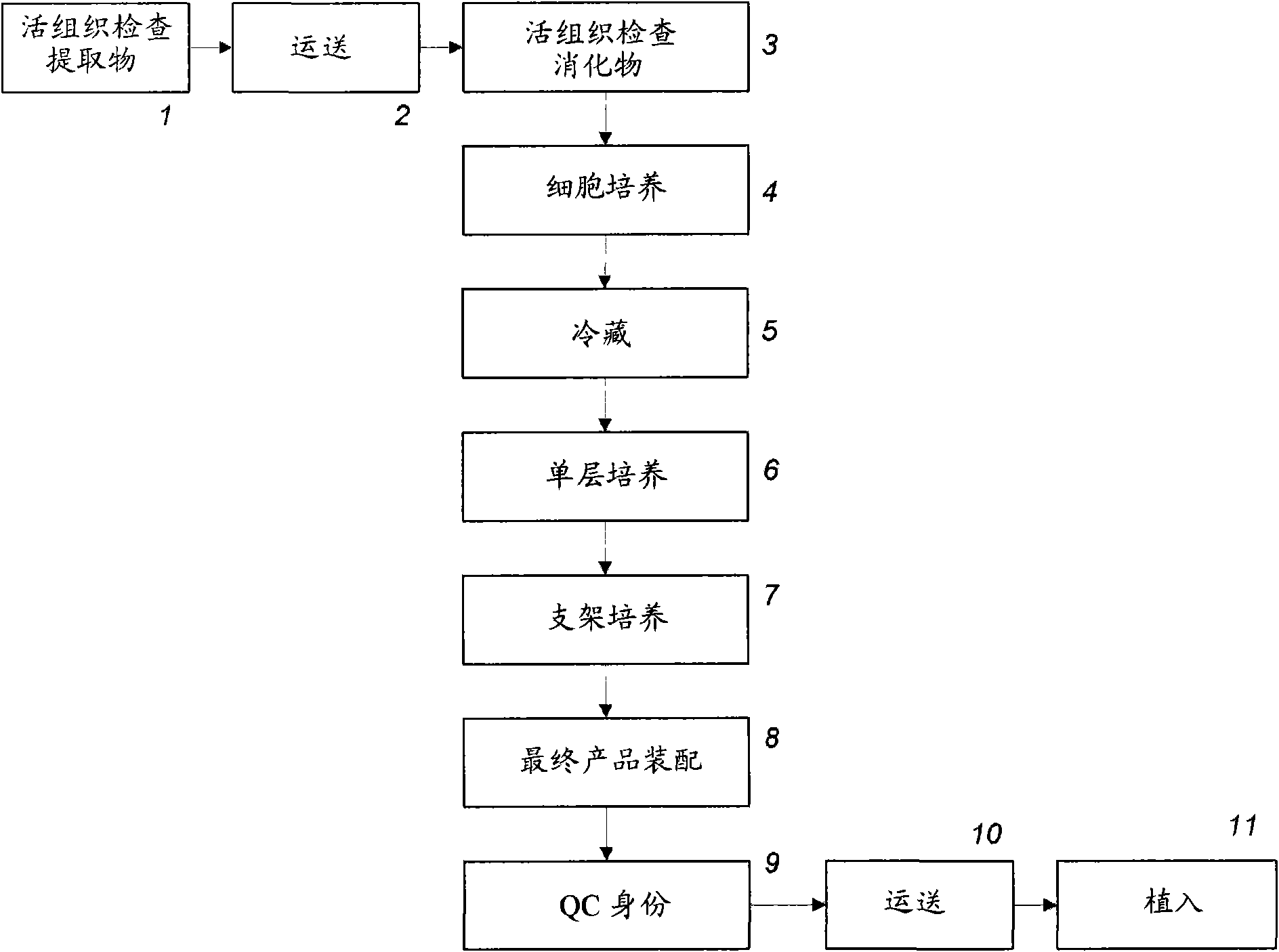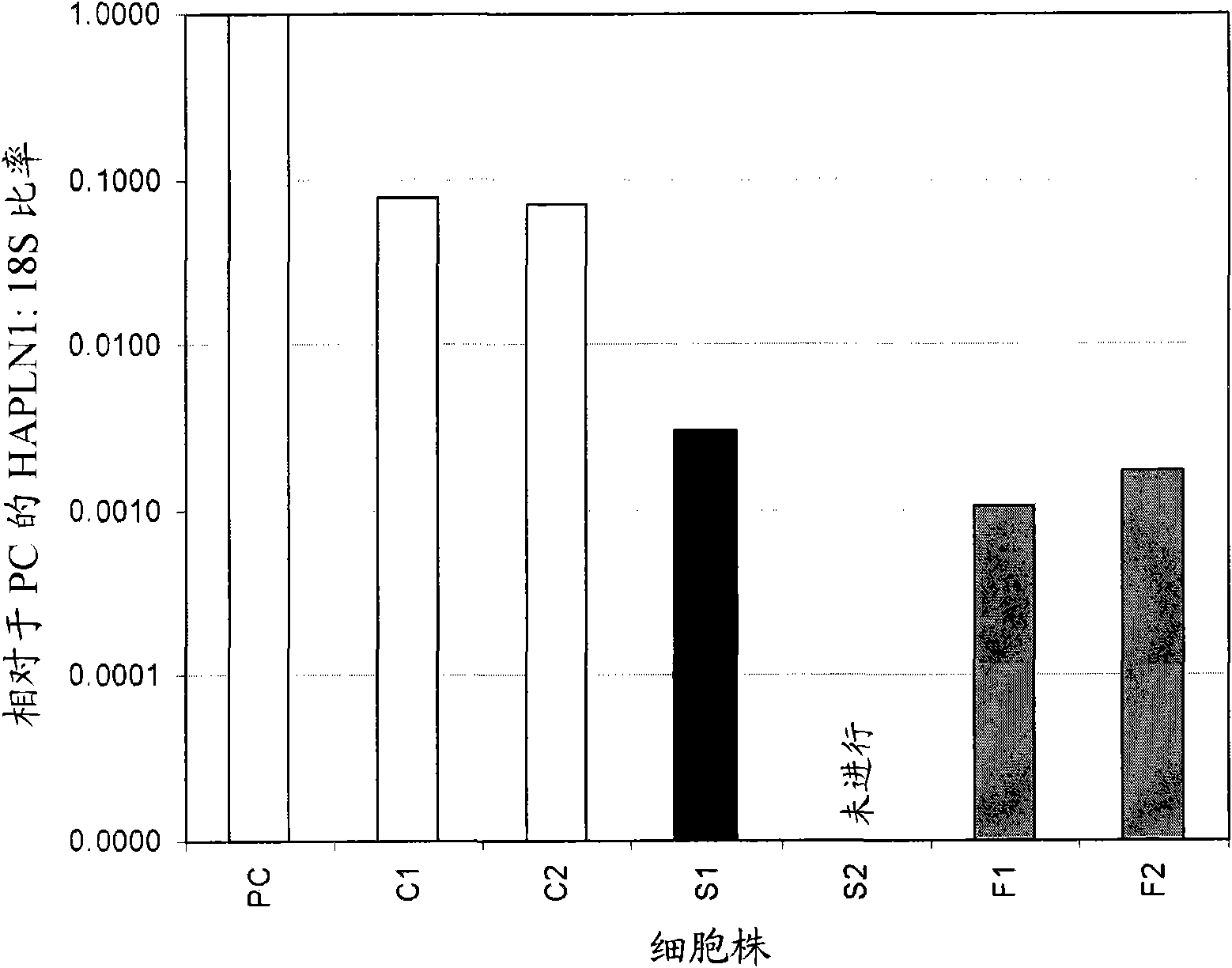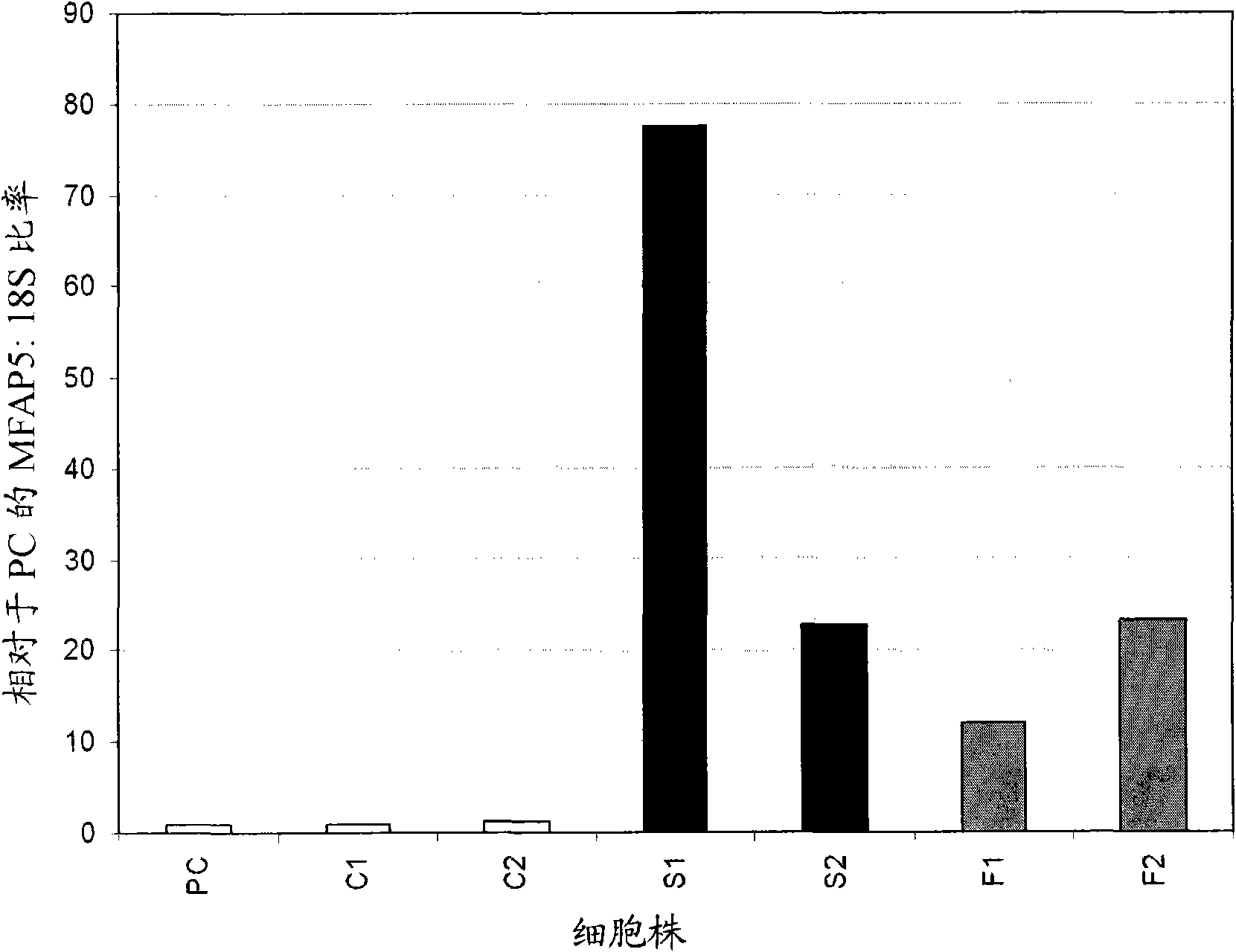Methods of evaluating cells and cell cultures
A technology for cell culture and culture, applied in the field of determining the composition of cell culture
- Summary
- Abstract
- Description
- Claims
- Application Information
AI Technical Summary
Problems solved by technology
Method used
Image
Examples
Embodiment 1
[0101] Example 1: Expression of HAPLN1 and MFAP5 in Chondrocytes, Synoviocytes and Fibroblasts
[0102] Cell isolation and culture - Human chondrocyte cultures are used to produce The method of autologous chondrocytes or the proteolytic method used to generate cultured chondrocytes are isolated from cartilage. used to generate For the autologous chondrocyte approach, the cartilage tissue was trimmed away from the bone and synovium, and subjected to a first digestion in which the tissue was enzymatically treated in a collagenase solution at 37°C for 18 hours. Cells released from the first digestion were distributed in tissue culture flasks containing medium (EGHXX) containing fetal bovine serum (FBS) and gentamicin. The cells were then subjected to a second digestion in which the remaining tissue from the first digestion was treated with a collagenase / trypsin solution for 2.5 hours at 37°C. Cells released from the second digestion were distributed among tissue culture flas...
Embodiment 2
[0140] Example 2: Expression of HAPLN1 and MFAP5 in other chondrocytes, synoviocytes and fibroblast lines
[0141] Expression levels of HAPLN1 and MFAP5 were determined in additional cell cultures to demonstrate the fidelity of the method used to differentiate chondrocytes from synovial cell cultures. The cultures used in this example are listed in Table 3.
[0142] Table 3: Cell cultures used in RT-PCR analysis (Example 2)
[0143] cell culture
cell culture type
PC
Chondrocytes
C3
Chondrocytes
second passage
C4
Chondrocytes
second passage
C5
Chondrocytes
second passage
C6
Chondrocytes
second passage
C7
Chondrocytes
second passage
S3
Synoviocytes
second passage
[0144] S4
Synoviocytes
second passage
S5
Synoviocytes
second passage
S6
Synoviocytes
second ...
Embodiment 3
[0153] Example 3: Testing the expression of HAPLN1 and MFAP5 in chondrocytes, synoviocytes and fibroblasts using custom designed primers and probes
[0154] A variety of chondrocyte, synoviocyte, and dermal fibroblast culture assays were performed using primers and probes of known oligonucleotide sequence.
[0155] Cell Isolation and Culture - The cell lines used in this example are listed in Tables 4 and 5 below. As described in Example 1, using the Autologous chondrocyte method to isolate and culture human chondrocyte cell cultures C1, C2, C3, C4, C5, C6, C7, C8, C26, C28, C30, and C34. Human chondrocyte cell cultures C21, C22, C23, C24, C25, C27, C29, C31, C32, and C33 were isolated (using the protease method) and cultured as described in Example 1. Cell isolation and culture methods for human synoviocyte cultures S1, S2, S3, S4, S5, S6, and S7 are described in Example 1 and Example 2. Synovial cell culture S9 was isolated by digesting minced synovial tissue in a soluti...
PUM
 Login to View More
Login to View More Abstract
Description
Claims
Application Information
 Login to View More
Login to View More - R&D
- Intellectual Property
- Life Sciences
- Materials
- Tech Scout
- Unparalleled Data Quality
- Higher Quality Content
- 60% Fewer Hallucinations
Browse by: Latest US Patents, China's latest patents, Technical Efficacy Thesaurus, Application Domain, Technology Topic, Popular Technical Reports.
© 2025 PatSnap. All rights reserved.Legal|Privacy policy|Modern Slavery Act Transparency Statement|Sitemap|About US| Contact US: help@patsnap.com



